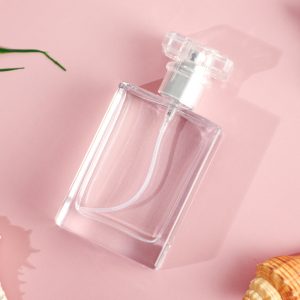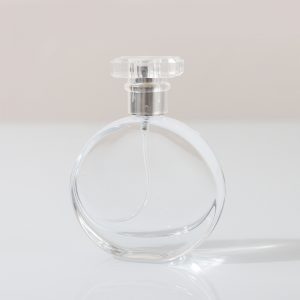Oriental elements have been in the perfume industry for many years, but how to make a perfume that truly makes Orientals culturally recognized is still at the stage of subject research.
As early as the 1970s, Eastern culture began to influence the design of modern perfumes. Jean Patou’s “1000” perfume bottle design comes from a Chinese snuff bottle; Saint Laurent’s “Opium” perfume bottle shape comes from the medicine box seal cage carried by the ancient Japanese samurai. In the following decades, Eastern culture has always been one of the inspiration sources of the perfume industry, and has broken through the limitations of styling design. As a result, Western perfumers are keen to explore and interpret Eastern culture. Roja Dove, the former perfumer of Guerlain, also released a new Chinese perfume “Nuwa” earlier this year. This perfume only sold in Harrods in the UK has the scent of fennel and immortelle, which is in line with China. People’s China has nothing to do with it.
There is even a broad category of fragrances in perfumes called “oriental” (oriental), which shows the importance of oriental culture in perfumes. But this “Orient” refers to the Middle East and India. These countries are rich in spices since ancient times, and they have a long-standing culture in the use of spices, sandalwood, especially resin and balsam. Therefore, the perfume industry refers to the perfumes that are used in a large number of fragrances originating from that place as “Oriental fragrances”. Oriental scents are mostly rich and mellow, reminiscent of the rich and colorful Arabian style.
With the Middle East market’s right to speak in the luxury world, agarwood (oud wood) is becoming popular in the global perfume industry. Probably because agarwood is the most popular fragrance material in the Middle East market. Natural agarwood oil has a rich and heavy scent. It is a woody fragrance with animal scent and a little resin aroma. But perfumers are not satisfied with the rich levels of agarwood itself. They use agarwood as the theme and display different styles, either modern or mysterious, or gorgeous or enchanting.
One of the benefits of becoming a trend is that agarwood, an expensive fragrance material, began to appear in commercial brands. In addition to expensive salon perfumes, agarwood is also found in today’s affordable commercial perfumes. In the Creed fragrance store in Lane Crawford, Hong Kong, there is a “Royal Oud” (Royal Oud), where the agarwood is accompanied by dried cedar and spicy pepper, which is tough; Valentina Oud Assoluto launched last year by Valentina is full of leather. Diablo school agarwood.
The elegant sweet-scented osmanthus came into the hands of western perfumers, not at all the sweet-scented sweet-scented osmanthus in Li Qingzhao’s poems that “dark, light luteal, soft in nature, distant and distant, only fragrant.”
However, outside the Middle East, there is another “Orient” that is also becoming the main force in the perfume industry, and that is the “Far East” in the Western concept, that is, today’s East Asia.
The influence of East Asian countries such as China and Japan on the perfume industry lies more on the cultural level. Han tea, osmanthus, bamboo and other plants have appeared in many perfumes; even the concepts of Zen, lacquered wood screen, peony pavilion, and dragon king have been inspired by perfumers. However, the traditional perfumers used to interpret the smell of East Asian culture are still in a “run-in period” between the olfactory perception and aesthetics of East Asian consumers.
For example, the “tea fragrance” that Chinese people are very familiar with is mostly embodied in traditional perfumes with “bergamot-based citrus with green scents of plants”. This aroma structure is actually more in line with Western teas such as Earl Grey. Regarding the elegant sweet-scented osmanthus, the western perfumers’ appreciating angle is also different from that of the Chinese. They either highlight the floral characteristics and use white flowers as a contrast to make them colorful and rich; or they capture the lactones in the scent of sweet-scented osmanthus and use peaches. Apricot and other scents are reflected, making it into a sweet and fruity fragrance. It’s not at all the sweet-scented osmanthus in Li Qingzhao’s poems that “dark, light luteal, soft in nature, only fragrant in the distant traces”.
The “Jade Dragon” perfume of the clothing brand ShanghaiTang is a good attempt to “perfume with oriental cultural temperament”: citrus and basil full of botanical flavors, warm and calm cedar and amber, which symbolize peace and harmony. “Jade” and the powerful “dragon”. There is also Shanghai Jahwa’s twin sister “Ye Shanghai” perfume, which uses the retro Suxinlan scent to reproduce the elegant temperament of oriental ladies in the 1930s. French salon perfume brand By Kilian’s “Asian Mythology” series borrows from older legends, from “The Legend of Peach Blossom Spring” to ink paintings on rice paper, which can be regarded as bolder but delicate creations.
East Asian consumers have a preference for “water” fragrances, and many salespeople often use “smells like natural body fragrance after bathing” to promote perfumes to them.
But until recently, the perfume industry has the term “naked incense”, which represents the kind of faint fragrance that East Asians love and can only be smelled when they are close. It is almost the opposite of agarwood, but because of the huge East Asian market. It is expected to become the next treasure of the perfume industry.
Although East Asian consumers are late in understanding and contacting perfume, they have also formed a unique aesthetic. Taking China as an example, Confucianism emphasizes introverted, reserved, and elegant, which has formed the gentle and elegant olfactory aesthetic tendency of the Chinese market. When buying perfume, consumers will even equate the importance of “whether it will cause interference to others” and “whether it is suitable for business occasions” with “whether it demonstrates their own personality.”
This unique aesthetic requires the perfume industry to no longer blindly produce “sexy”, “strong” and “sweet” perfumes, but to take into account the needs of consumers with different cultural backgrounds. Among the most successful perfumes in the East Asian market, the most famous are Issey Miyake and Kenzo Takada, who have Japanese descent. Issey Miyake’s “Water for Life”, as the pioneer of aquatic floral fragrances, has been among the best in the East Asian market in terms of popularity and sales since its inception; Kenzo Takada’s “Water of Love” perfume for women even takes the water lily as the protagonist, creating Pure, clear and elegant water fragrance. The corresponding men’s fragrance “Love of Wind”, also with clear water fragrance as the main note, is the first choice for many male consumers to start perfume.
Observing other popular perfumes on the market, it is not difficult to find East Asian consumers’ preference standards for “water” fragrances. Davidoff’s “cold water”, Armani “sentimental water” and even Dior’s “fresh water” (Dior Eau Sauvage), which came out in 1966, have always been the top few in the sales list of Chinese men’s fragrances. This shows that Chinese men are cautious and low-key in perfume selection. . This love for fresh and natural eau de toilette has led many salespeople to use “smells like a natural body scent after a bath” to sell them.
In the sales list of Chinese women’s perfumes, in addition to “Chanel No. 5”, which ranks first all the year round, it is Chanel “Encounters Green Scent”, Arden “Green Tea” and Marc Jacobs “Little Daisy” and so on. Compared with the most commonly used advertisements in the perfume industry, such as “sexy and hot” and “exciting oneself”, Chinese women prefer the concept of poetry and elegance, and believe that the looming dark fragrance is the expression of elegance and decentness. Hermès’ garden series, with high-quality materials, neutral, simple, natural and fresh style, has achieved good sales in the Chinese market and has become the first choice for many consumers in business occasions.
How to interpret the abstract cultural elements with the smell of images and be accepted by the subjective sense of smell? This may be a cross-art subject, so it is more necessary for perfumers with Western faces as the main body to have a deeper understanding of East Asian culture and to smell the ancient East Asian culture.









